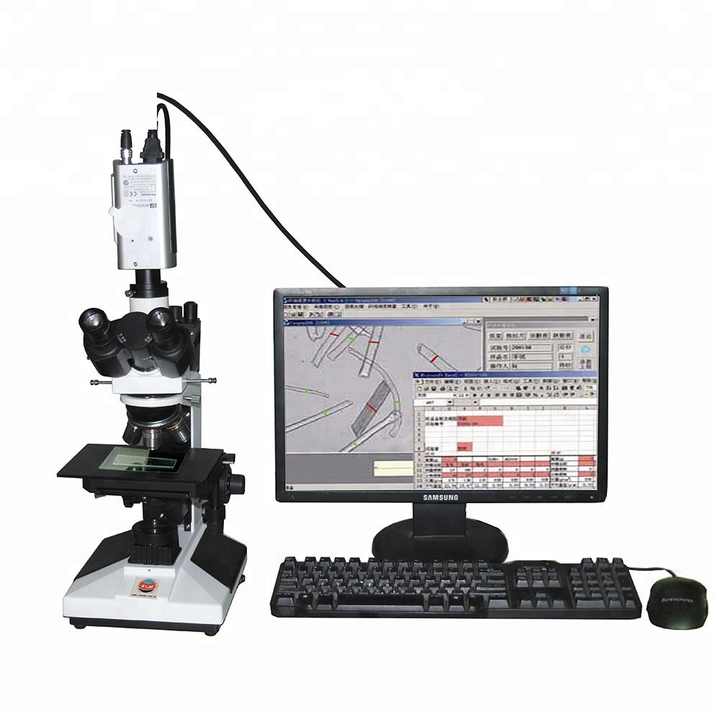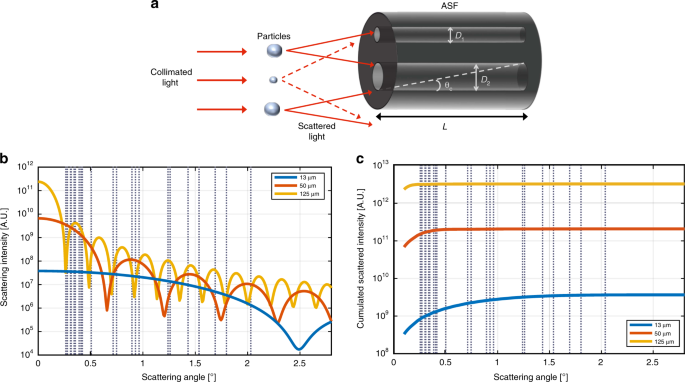Improve Fiber Quality with an Precise Optical Fibre Diameter Analyser
Improve Fiber Quality with an Precise Optical Fibre Diameter Analyser
Blog Article
Maximize Your Fibre Optic Efficiency: Recognizing Optical Fiber Size Analyser Technology
The performance of fibre optic systems is critically affected by the precision of their size, an aspect commonly forgot in the search of optimum signal honesty. Recognizing the technology behind optical fiber diameter analysers reveals the intricate balance between dimension accuracy and manufacturing high quality.
Relevance of Optical Fibre Size
The size of optical fibre plays a critical function in establishing the performance and effectiveness of interaction systems. It influences numerous crucial parameters, including the setting of light propagation, depletion, and bandwidth capacity. Bigger sizes usually enable for several light settings, facilitating higher data transmission prices. On the other hand, smaller diameters have a tendency to sustain less modes, which can improve signal quality and lower crosstalk.

Furthermore, understanding the size's effects can result in set you back savings by reducing the demand for signal amplification and repeaters in comprehensive networks (optical fibre diameter analyser). To conclude, the significance of optical fiber size can not be overstated, as it directly influences the total performance and dependability of contemporary interaction systems

Exactly How Size Impacts Signal Quality
Signal quality in optical fiber systems hinges considerably on the size of the fiber. The diameter affects several vital parameters, consisting of attenuation, bandwidth, and modal diffusion. A smaller size can lead to greater attenuation prices, leading to signal loss as light travels via the fiber. This depletion can endanger the stability of the transmitted data, causing a decrease in signal top quality, particularly over cross countries.
Alternatively, larger sizes generally permit boosted light capture and minimized modal dispersion, enhancing signal clearness. In multimode fibres, a bigger core size can sustain several light settings, but it may additionally introduce intermodal diffusion, which can break down signal top quality. As a result, selecting the optimal fiber diameter is vital for achieving the desired efficiency in details applications.
Moreover, the interaction in between the fibre size and the wavelength of the light utilized plays an important function in figuring out the efficient transmission distance and general signal integrity. Comprehending exactly how fibre size impacts signal top quality is important for network developers and engineers striving to maximize optical fiber systems for dependable, high-speed information transmission.
Overview of Size Analyser Technology
In many optical fiber manufacturing procedures, accurate measurement of fibre diameter is crucial for making sure regular efficiency and quality (optical fibre diameter analyser). Diameter analysers are advanced tools created to examine the physical measurements of optical fibres with high accuracy. They use sophisticated optical and laser innovations to gauge the diameter, ovality, and concentricity of the fibre, therefore supplying important information for quality control
These analysers can run in-line during the production procedure or as part of off-line testing protocols. In-line systems enable real-time tracking, allowing suppliers to change specifications immediately, thus maintaining ideal production conditions. Off-line analysers, on the other hand, provide extensive examinations of sets, making sure that any deviations from defined resistances are determined and dealt with.
Diameter analysers substantially contribute to the reduction of flaws in optical fibres, improving total item integrity. By consistently determining crucial specifications, these innovations assist in compliance with sector requirements and click site specifications. As the demand for high-performance optical fibres remains to increase, the function of size analysers becomes progressively important in achieving the wanted top quality and performance criteria in fiber optic systems.
Trick Functions of Fibre Size Analysers
Although various designs of fibre diameter analysers exist, they frequently share a number of essential features that improve their performance and dependability. One of one of the most substantial attributes is high-resolution dimension capacities, which make sure accurate size analyses, crucial for keeping quality assurance in fiber production. Furthermore, numerous analysers incorporate sophisticated optical sensors developed to detect minute variants in fiber size, thus providing vital data for procedure optimization.
Another vital attribute is real-time surveillance, permitting operators to get immediate feedback on fiber size throughout the production procedure (optical fibre diameter analyser). This ability promotes quick changes and lowers the possibility of problems. Several analysers also come furnished with user-friendly interfaces, making it possible for drivers to easily navigate via data and setups outcomes
In addition, durable data storage and evaluation capabilities are crucial for tracking historic efficiency patterns and ensuring compliance with sector standards. These features jointly add to the efficacy of fibre diameter analysers in maximizing fiber optic performance.
Best Practices for Fiber Optimization

First, regular calibration of optical fibre size analysers is essential. This makes certain accurate measurements and decreases potential disparities that might influence performance. Next off, preserving a tidy functioning atmosphere is crucial; Continue dust and impurities can cause indicate degradation.
Furthermore, it is very important to select fibres that fulfill certain application needs. This entails examining variables such as depletion, transmission capacity, and environmental conditions. Proper installment methods need to also be complied with, including avoiding sharp bends and too much tension, which can endanger fiber stability.
Moreover, using sophisticated surveillance systems can facilitate real-time performance evaluations, making it possible for prompt identification of concerns. Regular screening and upkeep ought to be performed to make certain that fibres stay within optimum functional criteria.
Last but not least, training personnel on the latest fibre optimization innovations and techniques will enhance their capability to implement effective methods. By following these finest methods, companies can considerably enhance the efficiency and life-span of their optical fiber systems, ensuring effective interaction and data transfer.
Conclusion
In verdict, the assimilation of optical fibre diameter analyser modern technology is critical for making best use of fibre optic performance. By making certain exact measurements of fiber measurements, these analysers substantially improve signal high quality and reduce losses throughout data transmission.
Signal quality in optical fibre systems pivots considerably on the diameter of the fiber.In lots of optical fibre production processes, exact dimension of fiber diameter is essential for making certain constant efficiency and quality. As the need for high-performance optical fibres continues to climb, the role of diameter analysers ends up being increasingly vital in accomplishing the preferred quality and efficiency requirements in fibre optic systems.
These functions collectively add to the efficacy of fiber size analysers in enhancing fibre optic efficiency.
In final thought, the assimilation of optical fiber diameter analyser modern technology is important for making the most of fibre optic performance.
Report this page